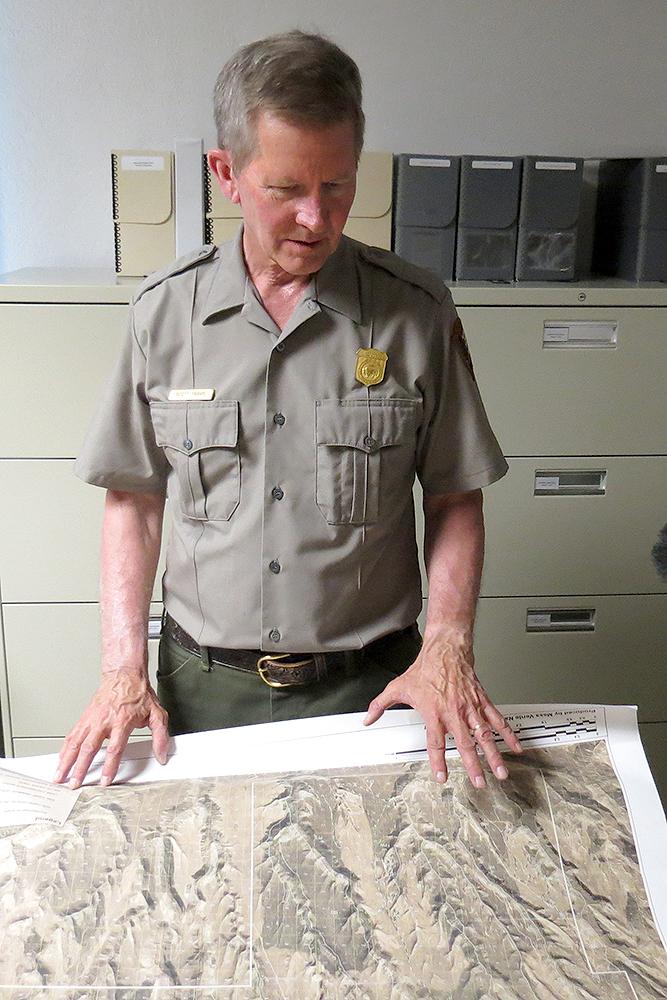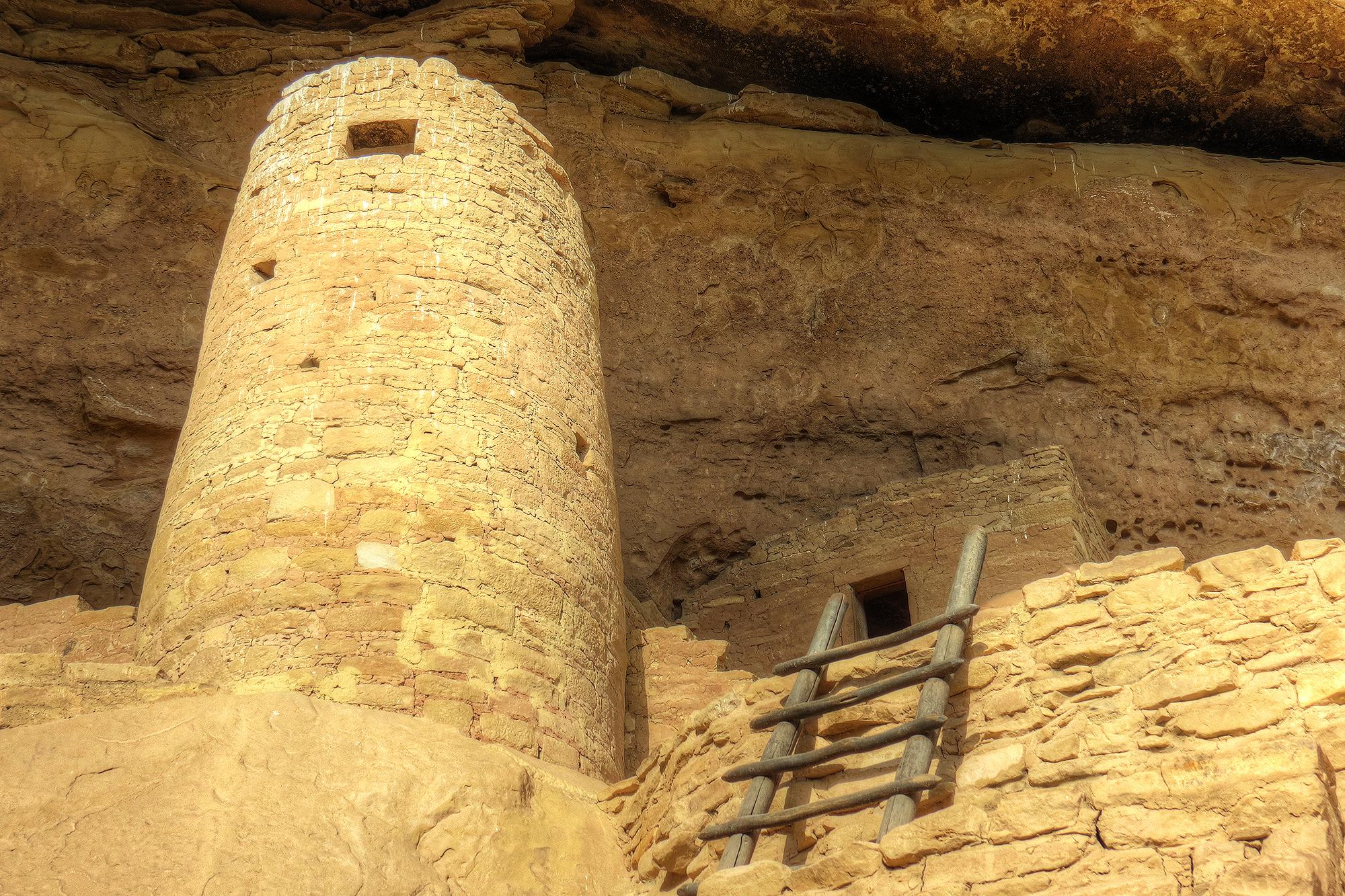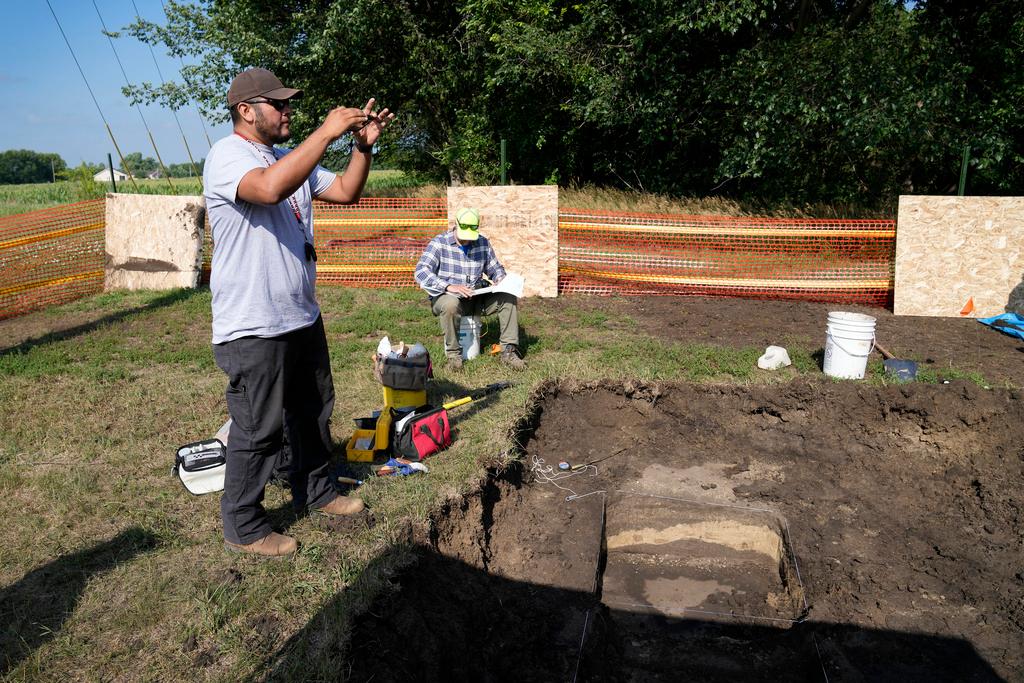
Editor's note: This story is part of a long term reporting project from CPR News that explores how climate change is affecting Colorado, what's being done to address those changes and more.
Think of Mesa Verde National Park and you probably imagine iconic cliff dwellings sketched in sandstone. Those homes were built by the Ancestral Pueblo before they left the area in the late 13th Century.
Climate change may be putting some of those dwellings in jeopardy. The structural integrity of Spruce Tree House, one of the Southwest’s most popular archeological attractions, is a particular worry.
"We’ve had stuff fall off the ledges,” said Mesa Verde Resource Management Chief Scott Travis, pointing to the very top of Spruce Tree House, the park’s third largest cliff dwelling.

Park officials shut off access to the inside of Spruce Tree in February after chunks of rocks fell. Travis thinks the falling rocks are connected to previous attempts to stabilize Spruce Tree House. Extreme temperature swings connected to climate change may also have contributed.
"It does seem as though we’re getting freeze thaw, freeze thaw, freeze thaw. And post those freeze-thaw cycles, we’re getting portions of that cliff face detaching in one form or another,” Travis said.
The high and low temperature fluctuations have worsened in recent years. And scientists expect fires to become more frequent and extreme than they are. That’s because the region is expected to go through more severe drought with temperatures rising 2.5 to 5.5 degrees over the next century.
But those are the long-term trends. Right now, year-to-year changes in weather have made planning for the future extremely difficult inside Mesa Verde.
"It’s the lack of predictability for us,” said Travis. “I mean, after hundreds of years of studying the weather… the predictability is the challenging part.”
So Travis and other park leaders are turning to what they hope will guide them through these uncertain times: scientific research.
Wildfire Threats
Right now it’s the future threat of wildfire that’s one of the biggest concerns for park officials. You don’t have to travel far inside the park to see how damaging it can be. Scott Travis walks through scorched trees that are still standing from the Long Mesa wildfire in 2002. The area looks like an eerie forest from a Tim Burton movie.

The damage left by wildfire is visible across many archeological sites. One farming terrace the Ancestral Pueblo used in the 12th and 13th centuries has splotches of red from firefighting foam used to fight the blaze.
"Sometimes it [fire] results in spalls and eventual failure. So pieces of the stone will pop off if it's subjected to a lot of high heat,” he said.
There are positives that come with fire. Previous wildfires prompted extensive archeological surveys. The 2002 Long Mesa Fire burn zone uncovered 73 undiscovered sites including traces of dams and homes. The Chapin 5 wildfire in 1996 revealed 372 new sites.
The threat of wildfire weighs heavy here though. Drought and bark beetle outbreaks have stressed the pinyon-juniper forests. Resource Management Chief George San Miguel said the park has taken proactive measures to prevent the spread of future wildfires.
That means removing trees and vegetation to create patches, or fuel breaks, to stop fire. The park has targeted invasive plant species like Cheatgrass, Russian knapweed and Musk thistle. San Miguel said the park is also studying how invasive plants get into the park in the first place.
Now Travis is gearing up for one of the more ambitious archeological research projects in recent memory: He wants to create a detailed picture of artifacts and cliff dwellings across much of the park. The park service is building a new map that divides the park into 500-meter squares. Each square would contain information on where exactly sites are located. Mesa Verde has some historic information. But Travis wants to rank sites according to their resilience to wildfire.
"To just be reactive is really not going to give us anything. Being problem focused, having a programmatic design is at least to me seems to be a more effective way to go about this,” he said.
Spruce Tree Puzzle
At Spruce Tree House, Mesa Verde officials have already started working with an engineering firm to stabilize the structure.

“In this park we’re starting to do somewhat of an inventory canyon by canyon to really get at how many of these alcove arches may exist, and how many may have collapsed,” said Travis.
While most visitors flock to a few popular cliff dwellings, the park has nearly 600 from which it can gather data.
Ultimately, information from this close study could create a model that would allow park officials to run projections and see how cliff dwellings behave under different climate scenarios. Travis envisions the model to be interdisciplinary, pulling in data from climate scientists and geologists.
“It gives us a way of identifying and allocating our resources in the most effective way possible,” said Travis.
It’s a lesson other National Park Service units are practicing. As resources across the National Park Service system remain tight, Travis said scientific research will provide important guideposts for the challenging years ahead.
---
You can connect with Grace Hood on Twitter @gracehood and follow CPR News on Twitter, Facebook and Instagram.









